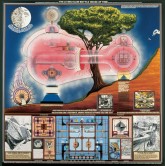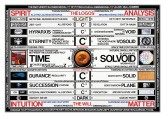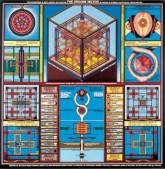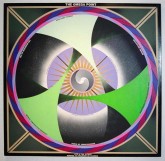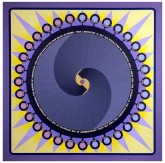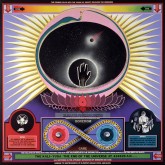Following studies at Harvard University and Brown University with honors in the Classics, Philosophy and Architecture, Paul Laffoley came to New York in 1962. He began as a studio assistant to the visionary Frederick Kiesler, and was recruited for late night TV viewing by Andy Warhol. Following a dismissal by Kiesler, Laffoley worked for 18 months on design for the World Trade Center Towers (floors 15 to 45) with Emery Roth & Sons under the direction of architect Minoru Yamasaki. Following his suggestion that bridges be constructed between the two towers for safety, he was summarily fired by Yamasaki. Returning to Belmont in 1965, he completed the first paintings of a mature style in the household basement against the wishes of his father. On Christmas Day, 1968, after a quarrel with a first studio partner, Laffoley was in immediate need of a studio and living accommodations. Having only one day to relocate, Paul found an empty room on the second floor of a downtown office building at 36 Bromfield Street in Boston, and immediately moved in. This studio would be infamously known as the Boston Visionary Cell (formally incorporated in 1971 as a non-profit art association encouraging art and architecture of the visionary genre).
Now clearly following his path as a painter, he began a highly original approach to the construction of the painted surface. Based on extensive hand written journals documenting his research, diagrams, and footnoted predecessors to various theoretical developments, Laffoley began to first organize his ideas in a format related to eastern mandalas that had captivated his interest in the spiritual. This format quickly developed into Laffoley’s three sub-groupings of work: Operating Systems, Psychotronic Devices and their related Lucid Dreams. Conceived of as “structured singularities”, Laffoley never works in series, but rather approached each project freshly, and individually. Working in a solitary manner, each 73 1/2 x 73 1/2 inch canvas can take one to three years to paint and code.
Since 1966 to the present, Laffoley has exhibited on a regular basis now totaling over two hundred shows including the Ward-Nasse Gallery until 1984, then with the Stux Gallery (Boston/New York) in 1985, and since 1988 at the Kent Gallery, New York. In 1989, Kent Gallery compiled and published the first monogram on Laffoley entitled The Phenomenology of Revelation. Laffoley also obtained his formal Architectural License in October 1990. His first museum retrospective was in 1999 resulting in the publication of the second Laffoley monograph entitled Paul Laffoley: Architectonic Thought-Forms: 1967-1999, to the Brink of the Bauharoque. A catalogue raisonne of the artist’s complete works is currently in preparation.



